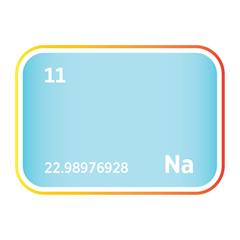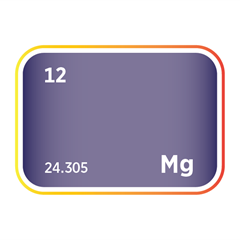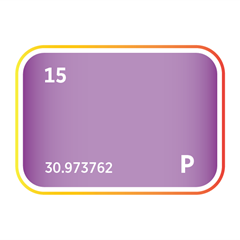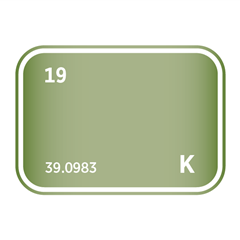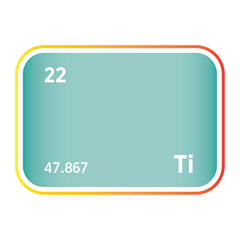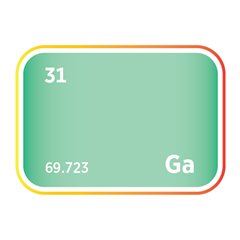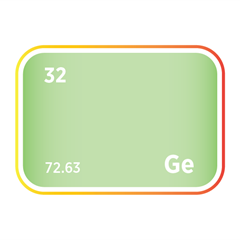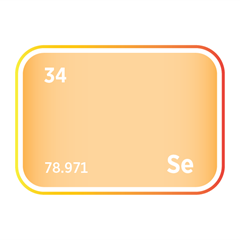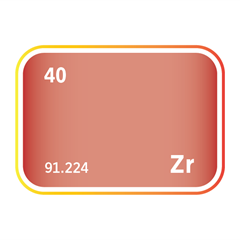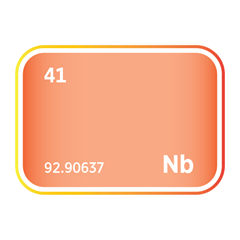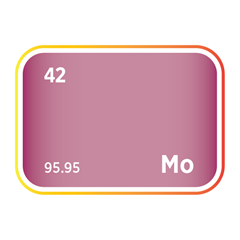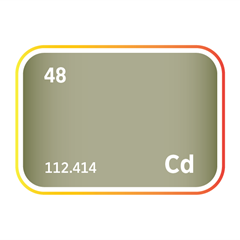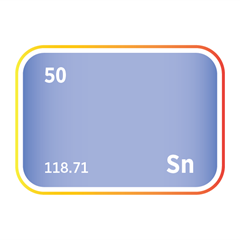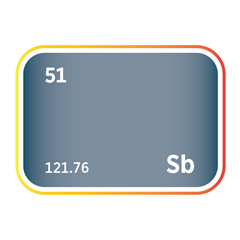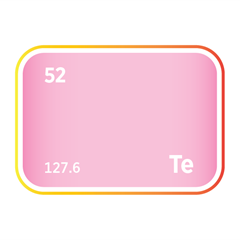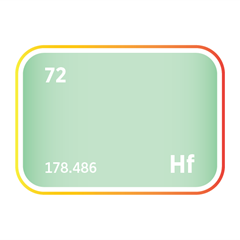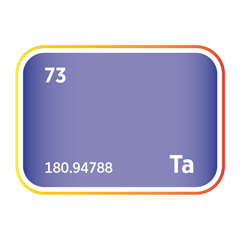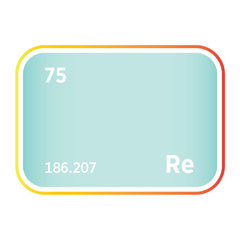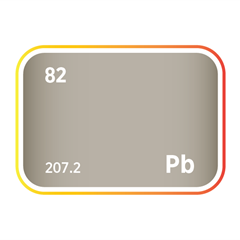Fluorine
Critical Minerals and The Energy Transition
Navigating the Fluorine Market
The fluorine market, pivotal for its role in diverse industrial applications, including pharmaceuticals, refrigerants, and notably in energy storage technologies, is at the forefront of addressing the dual challenges of meeting global energy demands and environmental sustainability. Its contribution to developing lithium-ion batteries through fluorinated compounds like lithium hexafluorophosphate is critical in enhancing battery performance, efficiency, and stability, thereby bolstering the electrification of transport and the integration of renewable energy systems. The push towards advanced energy solutions further elevates fluorine's significance, with its involvement in solid-state battery technologies and thermal management solutions promising higher energy densities and improved safety. Despite facing environmental and regulatory challenges, particularly around the use of some fluorinated gases, the fluorine market is evolving with a focus on sustainable practices and innovations, aiming to reconcile its indispensable benefits in energy storage and efficiency with the imperatives of environmental stewardship, thereby maintaining its vital position in the global shift towards cleaner energy solutions.
An introduction to fluorine
Fluorine demand and end-uses
Fluorine is a highly reactive, pale-yellow gas and the most electronegative of all elements, giving it extraordinary chemical reactivity and the ability to form stable compounds with almost all other elements. While elemental fluorine is rarely used outside of controlled industrial settings due to its extreme reactivity, fluorine compounds—particularly fluorocarbons, fluoropolymers, and metal fluorides, are essential across a wide range of sectors including electronics, pharmaceuticals, chemicals, clean energy, and defence. Fluorine’s unique ability to alter materials' physical and chemical properties makes it a powerful enabler of high-performance and high-purity technologies.
One of the most significant uses of fluorine lies in producing fluoropolymers, most notably polytetrafluoroethylene (PTFE), best known under the brand name Teflon. PTFE and other fluoropolymers are used extensively in non-stick coatings, chemical-resistant seals, gaskets, membranes, and insulation for wiring and electronics. These materials offer exceptional resistance to heat, chemicals, and friction, making them indispensable in aerospace, semiconductors, automotive, and industrial processing.
Fluorine compounds are also critical in the production of refrigerants, particularly hydrofluorocarbons (HFCs) and newer hydrofluoroolefins (HFOs). While many older fluorinated refrigerants are being phased out due to their high global warming potential, demand for lower-emission alternatives remains strong in air conditioning, refrigeration, and heat pump systems. Fluorine-containing refrigerants are prized for their thermal stability and low flammability, and fluorine chemistry continues to underpin innovation in climate-friendly cooling technologies.
In electronics manufacturing, fluorinated gases such as nitrogen trifluoride (NF₃) and hexafluoroethane (C₂F₆) are used for plasma etching and chamber cleaning in semiconductor fabrication. These gases enable precise control over material removal and cleanliness in producing microchips, flat-panel displays, and photovoltaic cells. As semiconductor geometries shrink and complexity increases, high-purity fluorinated process gases are essential for yield, reliability, and performance.
The pharmaceutical and agrochemical industries rely heavily on fluorine-containing compounds to improve the bioavailability, stability, and potency of active ingredients. Many blockbuster drugs contain fluorine atoms or trifluoromethyl groups, which enhance molecules' metabolic stability and efficacy. Fluorinated compounds are also common in pesticides and herbicides, where their chemical resilience and targeted activity help improve crop yields and reduce environmental impact.
In energy applications, fluorine is key in lithium-ion battery technology, particularly lithium hexafluorophosphate (LiPF₆), the most commonly used electrolyte salt. This fluorinated compound enables efficient ion transport and stability within the cell, supporting the performance of electric vehicle batteries, grid storage systems, and portable electronics. Fluoropolymers are also used as separators and binders in battery components. Research into solid-state and next-generation battery chemistries is ongoing, which may further increase fluorine's role in advanced energy storage.
Fluorine has specialised uses in uranium enrichment for nuclear power generation and defence. Uranium hexafluoride (UF₆) converts uranium into a gaseous form for isotope separation in centrifuges. This application is tightly regulated due to its association with nuclear proliferation, but it remains critical to the functioning of the global civilian nuclear fuel cycle.
Elemental fluorine is used in highly controlled environments to produce speciality materials, including certain high-energy explosives, propellants, and fluorinated carbon compounds used in space applications and advanced optics. Its reactivity is also helpful in small-scale applications such as surface passivation, removing impurities from metals, and synthesising complex organofluorine compounds.
Looking ahead, fluorine demand is expected to grow, driven by its irreplaceable role in electronics manufacturing, pharmaceuticals, and energy storage. Environmental regulations on high-GWP refrigerants may alter the profile of fluorine demand. Still, overall consumption is projected to remain strong due to the shift toward HFOs and the rising adoption of electric vehicles and heat pumps. New applications in hydrogen fuel cells, solid-state batteries, and advanced medical therapies may also expand fluorine’s strategic importance.
With its unmatched chemical versatility and cross-sectoral relevance, fluorine is set to remain a critical enabler of advanced manufacturing, clean technology, and high-performance materials. Its role in improving energy efficiency, data infrastructure, medical innovation, and industrial resilience ensures fluorine will remain deeply embedded in the technologies shaping the 21st-century economy.

Fluorine supply
Fluorine is not found in elemental form in nature due to its extreme reactivity but is industrially produced via the electrolysis of hydrogen fluoride (HF), which itself is derived from fluorspar (calcium fluoride, CaF₂). Consequently, the availability and quality of fluorspar resources, along with the infrastructure to convert fluorspar into HF, are critical determinants of fluorine supply.
China dominates global fluorspar production, accounting for the majority of both raw mineral output and downstream hydrogen fluoride production. This gives China a structurally advantageous position in the fluorochemical supply chain. Mexico, Mongolia, and South Africa are also major mining centres, exporting both acid-grade fluorspar and metallurgical-grade material to global refining hubs.
Other notable suppliers include Vietnam, Iran, Canada, and the United States, all of which have active or prospective fluorspar mining operations. Pakistan, Germany, Spain, and Italy also contribute smaller but regionally important volumes. While Germany, Italy, and the U.S. host downstream chemical industries capable of HF production, many other countries export raw fluorspar for refining abroad due to a lack of local processing capacity.
This global supply base is highly concentrated and vertically integrated, particularly in countries like China and the U.S., where fluorspar mining is co-located with chemical production. Fluorine is essential for the manufacture of refrigerants, fluoropolymers (e.g., PTFE), lithium battery electrolytes (such as LiPF₆), pharmaceuticals, and uranium enrichment processes. As such, production is typically embedded within chemical parks or industrial clusters to streamline logistics and reduce handling risks.
Resource nationalism and export controls, especially in China and Iran, have added pressure to international supply chains. China, in particular, has imposed export quotas and tariffs in the past, prioritising domestic consumption of fluorspar and HF for strategic industries. These measures have prompted efforts in countries like the U.S., Canada, and Vietnam to revive domestic mining and refining capacity.
Meanwhile, rising demand from clean energy technologies and high-performance electronics is intensifying scrutiny of fluorine supply security. Fluorinated compounds are indispensable in semiconductor etching, EV battery electrolytes, and solar panel coatings, leading to increased competition for high-purity feedstocks.
Environmental and regulatory factors also shape supply trajectories. The production of hydrogen fluoride is hazardous, and facilities must comply with stringent emissions and safety standards, particularly in North America and the EU. These requirements raise operational costs and can delay or deter new capacity development, making less regulated producers more cost-competitive but environmentally riskier.
Despite the natural abundance of salt-derived minerals like fluorine, economic availability is constrained by processing complexity, infrastructure, and regulation. Fluorine and its derivatives are rarely traded on open spot markets; instead, supply is governed by long-term contracts, limiting flexibility and transparency in response to sudden demand shifts.
In summary, fluorine supply is defined by fluorspar access, technological infrastructure, and strategic industrial policy. While a dozen countries contribute to global supply, China’s dominance, coupled with geopolitical risk and growing downstream demand, makes the fluorine value chain increasingly fragile and strategically important.
Current fluorspar producers
Fluorine substitution
Efforts to substitute fluorine and fluorinated compounds are primarily driven by environmental, health, and regulatory pressures, particularly concerns over persistent organic pollutants, bioaccumulation, and greenhouse gas potential. However, due to fluorine’s unique chemical properties, such as high electronegativity, thermal stability, and resistance to degradation, complete substitution is often difficult and application-specific.
In refrigeration and air conditioning, the transition away from high global warming potential (GWP) fluorinated gases has led to the adoption of hydrofluoroolefins (HFOs) and natural refrigerants such as CO₂ (R-744), ammonia (R-717), and hydrocarbons (like propane, R-290). These alternatives significantly reduce environmental impact, although they present flammability, toxicity, or equipment compatibility challenges. Regulatory frameworks like the Kigali Amendment to the Montreal Protocol are accelerating this transition globally.
In the pharmaceutical sector, fluorine is prized for enhancing bioavailability, metabolic stability, and target selectivity. While non-halogenated analogues or substitutions with other halogens (e.g., chlorine or bromine) are sometimes explored, these often fall short of fluorine’s performance, particularly in precision drug design. As such, fluorine remains irreplaceable in many advanced APIs (active pharmaceutical ingredients), though efforts are growing to reduce unnecessary halogenation and improve fluorinated compound lifecycle management.
Substitution trends in consumer products, especially non-stick cookware, focus on avoiding persistent fluorinated surfactants like PFOA and PFOS. Newer non-stick solutions include PFOA-free fluoropolymers, ceramic-based coatings, and silicone alternatives, reflecting increased consumer and regulatory scrutiny. While these options vary in performance and durability, they mark a shift toward safer, short-chain fluorochemistries or fluorine-free surface technologies.
In agrochemicals, fluorinated compounds are widely used for their potency and selectivity. However, bio-based herbicides, natural product analogues, and low-toxicity synthetic agents are increasingly explored as alternatives. While performance trade-offs remain, regulatory restrictions on persistent fluorinated pesticides drive more sustainable crop protection innovation.
Green chemistry approaches also contribute to substitution by developing fluorine-free catalysts, solvents, and reagents replicating fluorine’s reactivity or selectivity. Techniques such as micellar catalysis, flow chemistry, and enzymatic synthesis are helping to lower the fluorine footprint across industrial processes, aligning with broader goals of hazard reduction and waste minimisation.
Despite these developments, fluorine’s role in high-performance applications, especially semiconductors, pharmaceuticals, and speciality polymers, remains difficult to replace. Where substitution is feasible, it typically involves trade-offs in efficiency, durability, or cost, meaning partial rather than complete substitution remains the prevailing strategy in most industries.



Meet the Critical Minerals team
Trusted advice from a dedicated team of experts.

Henk de Hoop
Chief Executive Officer

Beresford Clarke
Managing Director: Technical & Research

Jamie Underwood
Principal Consultant

Ismet Soyocak
ESG & Critical Minerals Lead

Rj Coetzee
Senior Market Analyst: Battery Materials and Technologies

How can we help you?
SFA (Oxford) provides bespoke, independent intelligence on the strategic metal markets, specifically tailored to your needs. To find out more about what we can offer you, please contact us.

























